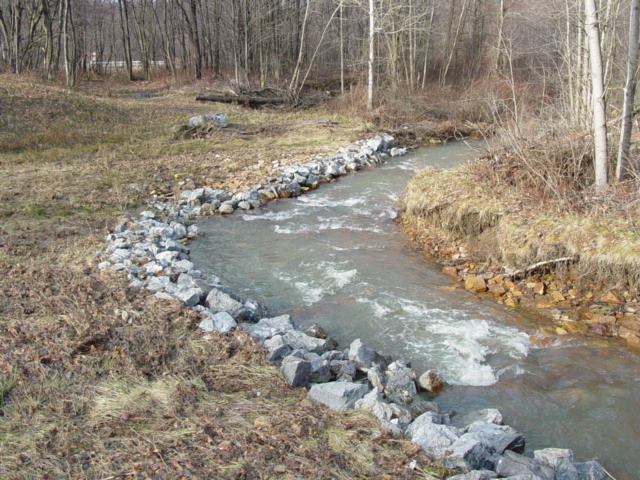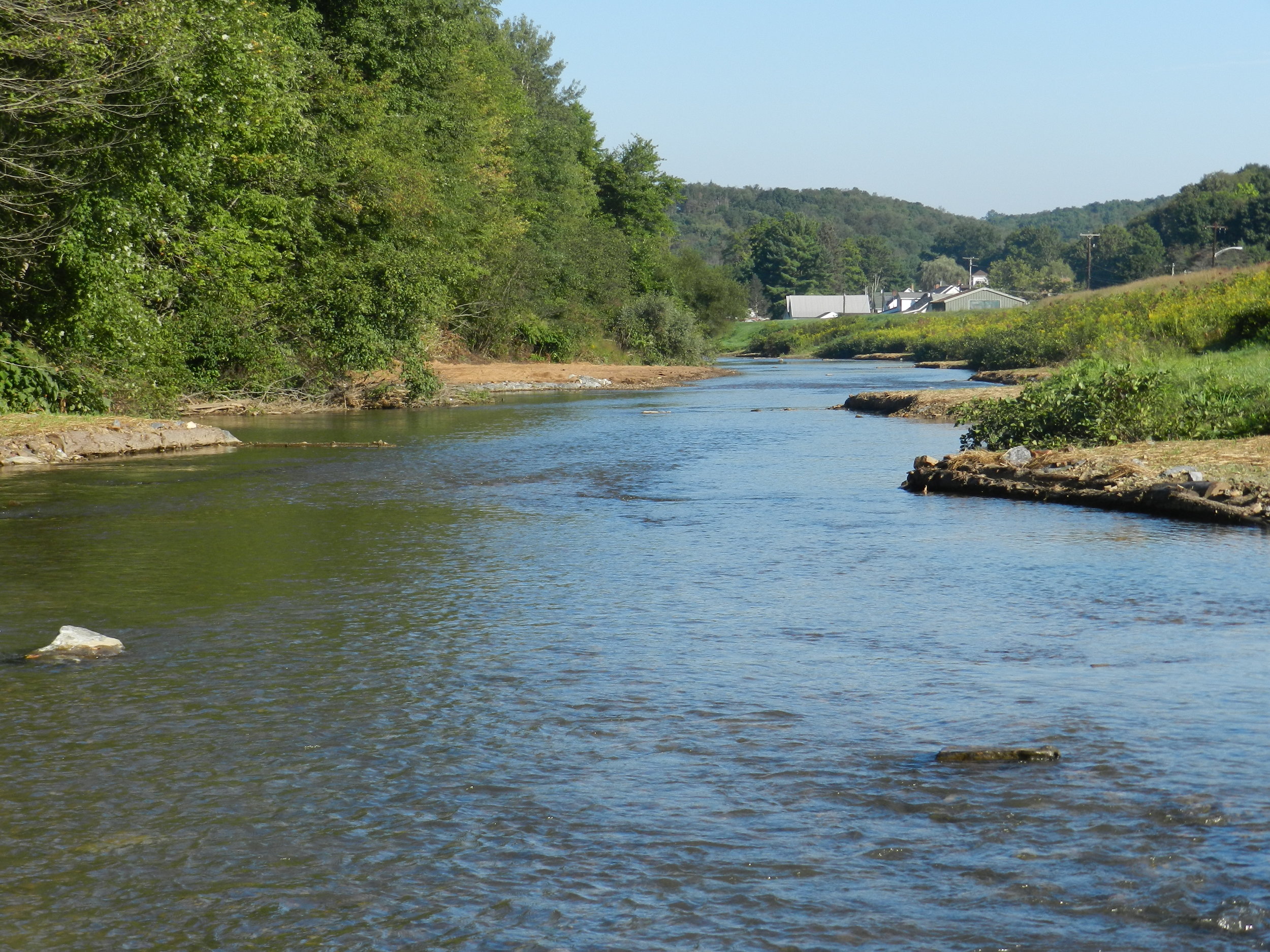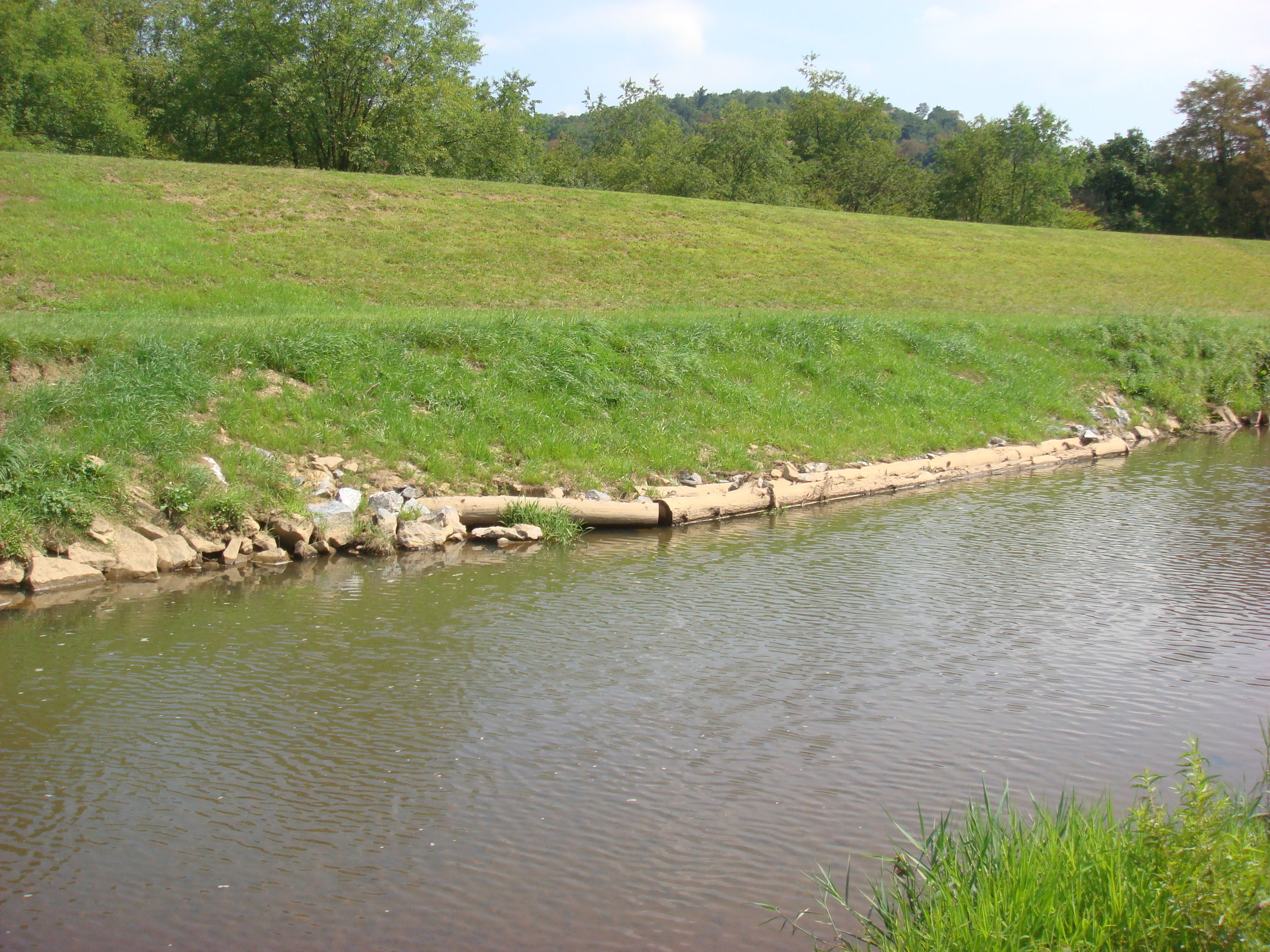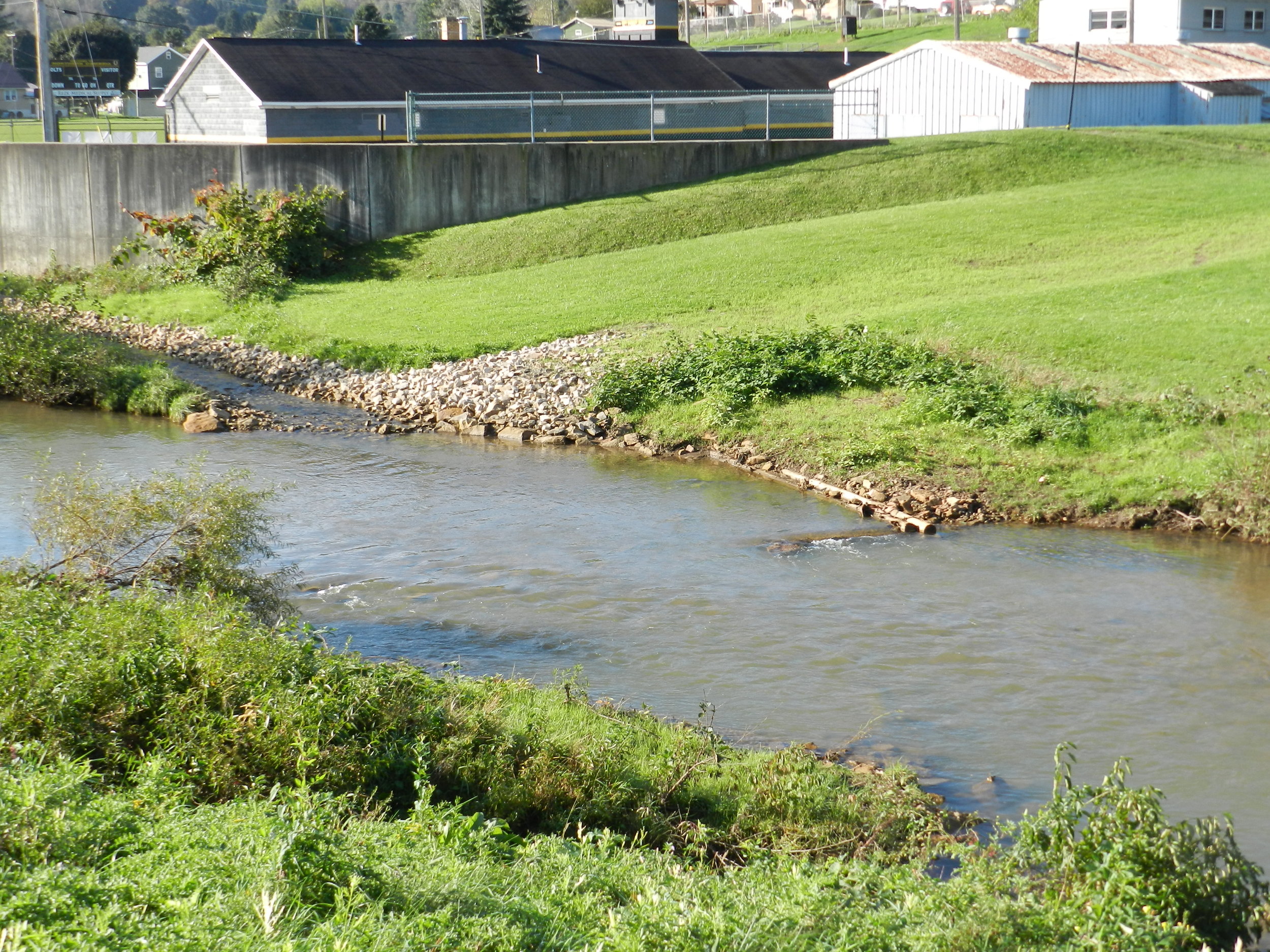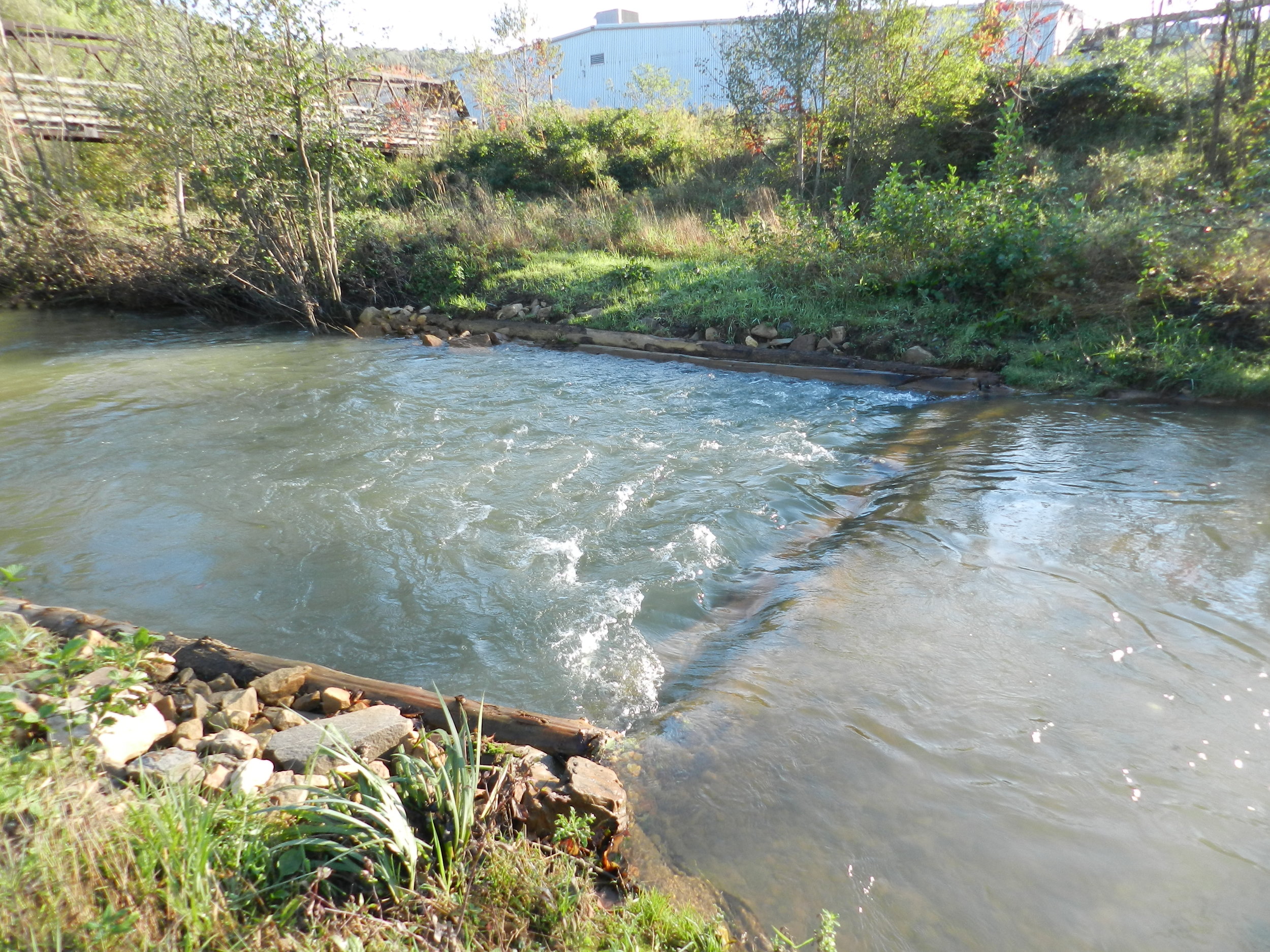stream restoration projects
Fox Run Phase II
The bank was extremely eroded and being undercut by the current of the stream. The bank was regraded and vegetation was planted in order to stabilize the bank. This project resulted in a stream bank that looks completely different and much more natural.
Fox Run before
Fox Run after
Patton flood control restoration project
The goals of the project were to improve sediment transport through the flood control area while improving fish habitat and reducing sediment loading from eroded streambanks into Chest Creek.The project recreated a low flow meandering channel within the flood control area utilizing fish habitat devices.
Patton before
Boulders placed in Patton after the restoration
Patton after
Nanty Glo flood control restoration project
The goals of the project were to improve sediment transport through the flood control area while improving fish habitat and reducing sediment loading from eroded streambanks into the South Branch Blacklick Creek.The Project recreated a low flow meandering channel within 4000 feet of the flood control area utilizing fish habitat devices.
Severe levee erosion in Nanty Glo Before
Nanty Glo After
Nanty Glo After
Northern Cambria Flood Control restoration project
The goals of the project were to improve sediment transport through the flood control area while improving fish habitat and reducing sediment loading from eroded streambanks into the West Branch of the Susquehanna River. The Project recreated a low flow meandering channel within flood control area utilizing fish habitat devices.
Northern Cambria Flood Control with devices installed
Northern Cambria Flood Control with devices installed
Northern Cambria Flood Control with devices installed


